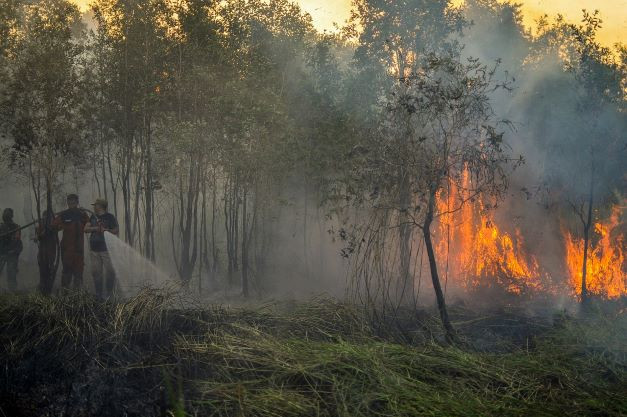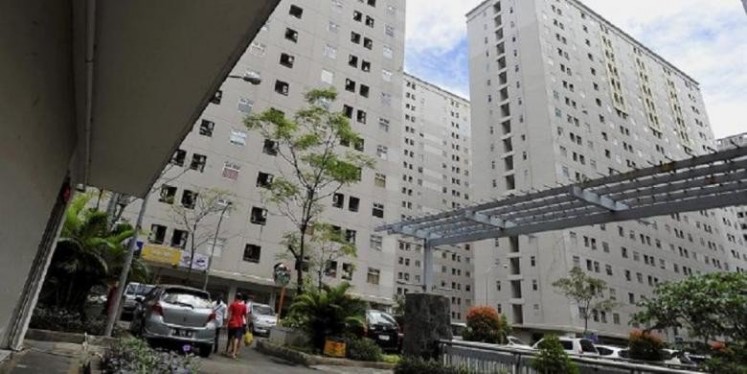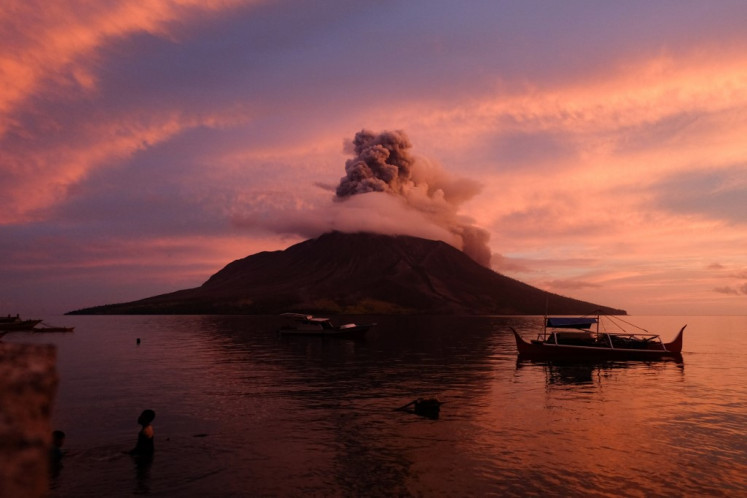3.8m hectares of peatland at high risk of fi re
Up to 3.8 million hectares of peatland areas are at high risk from being burned, as peatland-restoration efforts are overshadowed by lackluster fire mitigation and weak law enforcement, according to environmental coalition Pantau Gambut
Change Size

U
p to 3.8 million hectares of peatland areas are at high risk from being burned, as peatland-restoration efforts are overshadowed by lackluster fire mitigation and weak law enforcement, according to environmental coalition Pantau Gambut.
In its 2023 study on the potential for land and forest fires on peatland hydrological units (KHG) in Indonesia, which was released on Thursday, the coalition found that up to 16.4 million hectares of peatland areas are at risk of being burned, about 3.8 million hectares of which were considered at high risk.
The study was conducted using a dataset of hot spots and areas burned from the land and forest fires that occurred from 2015 to 2019, as well as other variables such as land cover type, soil type, concession areas and tree cover losses.
Pantau Gambut researcher Almi Ramadhi pointed out that South Papua, one of the newly established provinces in Papua, had the highest proportion of risk from fires on peatlands, with 97 percent of the total 1,421 hectares of peatland of the Ifuleki-Bian River and Dalik River at high risk of being burned.
Meanwhile, Central Kalimantan has the most areas at high risk, with around 1.13 million ha spread over KHG at high risk from fires, Almi said. The high risk areas in the province also include areas of former food estate project the Peatland Development (PLG).
In the mid-1990s, the administration of then-president Soeharto sought to develop a food estate project called the PLG by converting 1.4 million ha of peatland into farmland in Central Kalimantan.
“Talking about fires in Central Kalimantan is hard without acknowledging the areas of former PLG land, the food estate project that failed,” Almi said at the launch of the study in Jakarta.
Fires in Indonesia are often started on peatland, as data on forest fires from 2015 to 2019, as well as research published in academic journals found that fires often started from dried up and damaged peatland, he said.
Failure at root
The study, Pantau Gambut campaigner Wahyu Perdana said, showed the government had failed in addressing the root causes of land and forest fires, namely the damage to peatland ecosystems as forest-fire mitigation mainly focused on putting out fires.
“Policies to protect wetland ecosystems have also been weakened by the Jobs Creation Law that gives leeway [to plantations] inside forest areas,” Wahyu said.
Weak law enforcement also allowed peatland to be regularly burned, as analysis by Pantau Gambut found that of the 1.4 million hectares of peatland burned from 2015 to 2019, about 70 percent was on concessions and 36 percent had been burned more than once.
In response to the study findings, Mangrove and Peatland Restoration Agency (BRGM) head Hartono, said that the Pantau Gambut study was a reminder that peatland ecosystems are prone to being burned, especially during long dry seasons.
“The BMKG [Meteorology, Climatology and Geophysics Agency] has predicted that it will be drier this year than the previous year. So, we need all parties to be on alert,” Hartono told The Jakarta Post on Friday.
Hartono said that the BRGM aimed to restore as much as 1.2 million hectares of peatland in non-concession areas by 2024, with about 586,000 hectares having been restored by the end of 2022.
“This year we aim to restore about 300,000 hectares of peatland,” Hartono said.
He said that peatland restoration in concession areas was the responsibility of the concession permit holders, with about 3.1 million hectares of peatland in concession areas having been restored, according to the Environment and Forestry Ministry in 2019.









